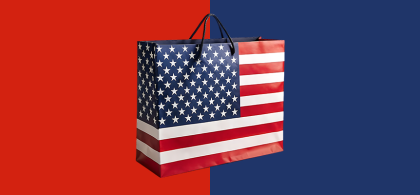
INFLATION: THE RUSSIAN-UKRAINIAN WAR EXACERBATES A STRUCTURAL TREND
Professor of economics at NEOMA, Nathalie Janson understands the mechanisms of inflation. While the subject is more front page than ever, she breaks down for us the current rise in prices. This is a trend that started before the war in Ukraine.
Energy prices are shooting up due to the war in Ukraine, but that’s not the only reason. The context was already strained before 24 February.
The war in Ukraine has exacerbated the trends already at work on the oil market. The strength of the economic upturn leading to a gradual restart in oil production explains the upward pressure. The offer was slowly adjusted for two reasons. Oil production has very little flexibility, with oil well operation being an activity that does not have a flexible pace of production. And the sector, including the fracking in the US, is averse to increase production capacities given the polices for combating global warming.
The Russian-Ukrainian war thus reinforces this structural increase of post-COVID oil prices.
Yes. Russia is the third largest producer after Saudi Arabia and the US and the second largest exporter. The sanctions levied against it make supply difficult and risky in the months ahead. Added to that is the unfavourable euro/dollar exchange rate. The euro is at its lowest rate, around $1.10, while it was $1.60 in 2008 when a barrel of oil went up to $140. In 2008, the price of petrol, however, did not reach €2, but “just” € 1.5.
The situation for wheat was also strained well before the war.
The poor harvest from the summer of 2021 due to intense heat and the stunted harvests in South America caused by heavy rains created an unfavourable situation. Ukraine accounts for 12% of global exports.
More generally, since the start of 2021, we have seen a rise in inflation. What was the reason for this jump in prices?
During the pandemic, the French government provided support to companies by keeping their staff employed. The European Central Bank took on a massive amount of souverain debt to facilitate the financing of public expenses. The economy shutdown with each lockdown, and employees were compelled to save their income because they were unable to be consumers. The return to activity created a bottleneck due to the large amount of cash in circulation.
So, that means western central banks have been printing money for over a decade. How do we explain why inflation has only just started up?
There is disagreement on this subject between liberal economists and Keynesian economists, with the latter having supported generous debt buyback policies.
For Keynesian economists, current inflation is tied to exceptional circumstances created by the pandemic, particularly the bottlenecks.
Liberal economists on the other hand view the asset bubble building for the past ten years on financial markets, the art market and the cryptocurrency and NFT market as a manifestation of this inflation that has now extended to goods and services.
Should we be afraid of a catastrophe scenario with a two-digit inflation rate as seen in Latin America and Turkey?
Fortunately, no, because our western economies are much more open—even if COVID and the Russian-Ukrainian war restricts this openness—and our dominant currencies, which enable us to export our inflation, unlike developing nations that have limited access to goods and services and have an unstable currency. Also, the central banks in Latin America sometimes buy debt directly from the state, which often never gets its public debt under control because it is too corrupt or too involved.
Moreover, to everyone’s surprise, the European Central Bank decided not long ago to accelerate the end of its special pandemic asset buyback programme and the FED started to increase its rates. We have to hope that these decisions can restrain inflation acceleration, but nothing is certain given that the inflation process is difficult to control. The tensions over the prices of raw materials are long lasting and contribute to inflation’s rise through wage demands. The liquidity injected by the massive asset buyback programme could be redirected from the financial markets to the goods and services markets.
Interview by Pauline Bandelier, February in NEOMA ALUMNI MAG updated in March, 22



